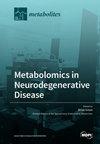Adenosine Triphosphate and Adenylate Energy Charge in Ready-to-Eat Food
IF 3.4
3区 生物学
Q2 BIOCHEMISTRY & MOLECULAR BIOLOGY
引用次数: 0
Abstract
It is commonly accepted that dietary nucleotides should be considered as essential nutrients originating mainly but not exclusively from meat and fish dishes. Most research in food science related to nutrition nucleotides is focused on raw products, while the effects of thermal processing of ready-to-eat food on nucleotide content are largely overlooked by the scientific community. The aim of this study is to investigate the impact of thermal processing and cold storage on the content of dietary nucleotides in freshly prepared and canned ready-to-eat meat and fish food. The concentrations of ATP, ADP, AMP, IMP, Ino, and Hx were determined using NMR, HPLC, FPMLC, and ATP bioluminescence analytical techniques; freshness indices K and K1 and adenylate energy charge (AEC) values were estimated to assess the freshness status and confirm a newly unveiled phenomenon of the reappearance of adenylate nucleotides. It was found that in freshly prepared at 65 °C ≤ T ≤ +100 °C and canned food, the concentration of free nucleotides was in the range of 0.001–0.01 µmol/mL and remained unchanged for a long time during cold storage; the correct distribution of mole fractions of adenylates corresponding to 0 < AEC < 0.5 was observed compared to 0.2 < AEC < 1.0 in the original raw samples, with either a high or low content of residual adenylates. It could be assumed that heating at nonenzymatic temperatures T > 65 °C can rupture cell membranes and release residual intracell nucleotides in quite a meaningful concentration. These findings may lead to a conceptual change in the views on food preparation processes, taking into account the phenomenon of the free adenylates renaissance and AEC bioenergetics.即食食品中的三磷酸腺苷和腺苷酸能量电荷
人们普遍认为,膳食核苷酸应被视为人体必需的营养素,主要来源于肉类和鱼类菜肴,但并非唯一来源。与营养核苷酸有关的食品科学研究大多集中在生鲜产品上,而即食食品的热加工对核苷酸含量的影响在很大程度上被科学界所忽视。本研究旨在探讨热加工和冷藏对新鲜制作和罐装即食肉类和鱼类食品中膳食核苷酸含量的影响。研究采用 NMR、HPLC、FPMLC 和 ATP 生物发光分析技术测定了 ATP、ADP、AMP、IMP、Ino 和 Hx 的浓度;估算了新鲜度指数 K 和 K1 以及腺苷酸能量电荷(AEC)值,以评估新鲜度状况,并证实了新发现的腺苷酸核苷酸重现现象。结果发现,在 65 °C ≤ T ≤ +100 °C 下新鲜制备的食品和罐装食品中,游离核苷酸的浓度在 0.001-0.01 µmol/mL 的范围内,并且在冷藏过程中长期保持不变;与原始样品中 0.2 < AEC < 1.0 的腺苷酸残留量相比,观察到腺苷酸摩尔分数的正确分布为 0 < AEC < 0.5,腺苷酸残留量或高或低。可以推测,在 T > 65 °C 的非酶促温度下加热会使细胞膜破裂,释放出相当高浓度的细胞内残留核苷酸。考虑到游离腺苷酸的复兴现象和 AEC 生物能,这些发现可能会改变人们对食品制备过程的看法。
本文章由计算机程序翻译,如有差异,请以英文原文为准。
求助全文
约1分钟内获得全文
求助全文
来源期刊

Metabolites
Biochemistry, Genetics and Molecular Biology-Molecular Biology
CiteScore
5.70
自引率
7.30%
发文量
1070
审稿时长
17.17 days
期刊介绍:
Metabolites (ISSN 2218-1989) is an international, peer-reviewed open access journal of metabolism and metabolomics. Metabolites publishes original research articles and review articles in all molecular aspects of metabolism relevant to the fields of metabolomics, metabolic biochemistry, computational and systems biology, biotechnology and medicine, with a particular focus on the biological roles of metabolites and small molecule biomarkers. Metabolites encourages scientists to publish their experimental and theoretical results in as much detail as possible. Therefore, there is no restriction on article length. Sufficient experimental details must be provided to enable the results to be accurately reproduced. Electronic material representing additional figures, materials and methods explanation, or supporting results and evidence can be submitted with the main manuscript as supplementary material.
 求助内容:
求助内容: 应助结果提醒方式:
应助结果提醒方式:


